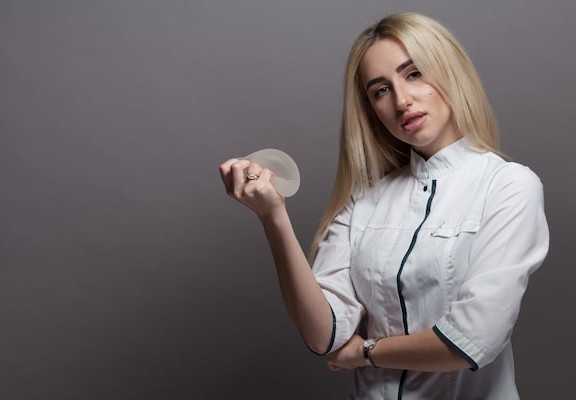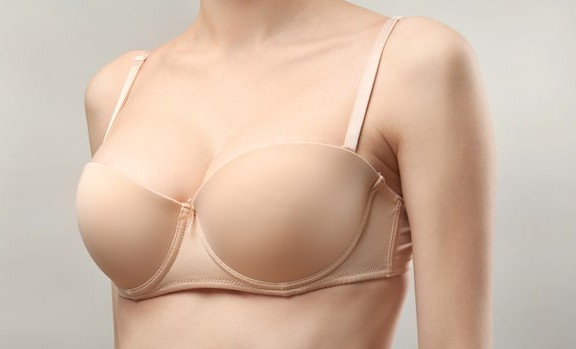Breast implants, more commonly referred to as a “boob job,” is a procedure designed to change and improve the size, shape and texture of a woman’s breast. While the use of implants is considered more of a cosmetic procedure, surgeons sometimes utilize it for medical purposes such as breast reconstruction. Breast reconstruction, a procedure for restoring or rebuilding the breasts, is done on patients who have undergone a mastectomy (removal of the breasts) due to cancer. Implants may also be utilized to correct chest wall defects and other deformities.
Three main types of breast implants exist. Each is classified according to what material they are made of. The first two are saline and silicone breast implants. The third, and least popular choice,are the so-called alternative composition implants. Alternative composition implants contain various miscellaneous fillers including polypropylene string, soy oil and other fillers. However, alternative composition implants are no longer manufactured and no longer available.
What Are They Made Of?
Saline implants consist of sterile salt water wrapped in a shell of elastomer silicone. The salt water has a concentration of 0.9% weight per volume of NaCl. This concentration is pretty much identical to the concentration found in our body making saline implants very compatible with living tissues. This type of implant was first manufactured in 1964 as a prosthetic medical device. Saline implants were the most commonly used prosthesis for breast implant surgeries prior to the introduction of silicone implants. In the 1990’s however, the FDA ordered a restriction on silicone implants due to its allegedly harmful effects which made saline implants the top choice. It turned out there was no evidence of harmful effects and the restriction was lifted allowing silicone implants to regain their popularity.
Silicone implants consist of silicone gel that is also encased in an elastomer silicone shell. The ones currently available are third to fifth generation silicone implants. The third and fourth generation implants are “common” saline implants filled with viscous silicone gel. The fifth generation implants are made of semi-solid gels. The development of these new generations of implants aims to prevent, or at least minimize, the leakage of filler material from the implant shell. In addition, the improved size, shape and texture of modern silicone implants match the natural look and feel of a woman’s breasts.
Technique
The technique for placing saline implants is much simpler and less invasive compared to that of silicone implants. When using saline implants, the surgeon inserts empty implants into the breast pockets. Once in place, the surgeon fills each implant with saline solution. Because empty implants are inserted, the required incisions are short and small and therefore results in minimal scarring. In silicone implants, longer and bigger incisions are needed to insert the pre-filled implants with thick or semi-solid silicone gel.
Costs
Saline implants are significantly cheaper than silicone implants. A pair of saline implants costs around $1000 to $2000 while traditional silicone implants are twice as high. Fifth generation implants, aka “gummy bear” implants, cost anywhere from $3000 to $5000. The surgical technique for a saline implant surgery is a bit simpler so the fees for the surgeon and hospital facilities are lower.
Implant Rupture
Breast implants don’t last forever. They last and retain their shape for years but, at some point, they will rupture and have to be removed and replaced. When a saline implant ruptures, it empties its silicone shell and deflates. A person will know that it has ruptured thanks to a dramatic reduction in breast size. The salt water gets absorbed by the body without causing any complications.
On the other hand, it is much more difficult to detect a ruptured silicone implant because it does not deflate even though the silicone gel actually leaks from its shell. Unlike salt water, the body does not absorb silicone gel. Instead, the gel migrates to the breast pocket where it causes painful capsular contracture. Capsular contracture refers to the formation of scar tissue around the implant. The scar tissue is made up of thick collagen fibers that may compress and distort the implant, the breast or both of them. If left untreated for a long time, a ruptured silicone implant may cause enlargement of the lymph nodes in the nearby area. If a patient suspect leakage on one or both of their silicone implants,they should consult their doctor right away and confirm the rupture through an MRI. All ruptured implants require surgical removal. The removal of a deflated saline implant is easier than a silicone implant mainly because the latter also requires surgery of the collagen fiber capsule.
Results and Recovery
Silicone implants are said to produce better results. They provide a more realistic feel and texture, smoother contour and fuller look. But the results obtained from saline implants are not far behind especially if they are placed under the muscle of the chest area. The aesthetic result that can be derived from such placement is more or less similar to that of a silicone implant even though the saline implant is still more palpable.
Like any other surgical operation, implant surgeries carry certain complications which call for a recovery period of at least a week. Saline implants are more likely to cause post-operative complications which include rippling, wrinkling of the skin and the implant being a bit noticeable in its look and feel. The incidence of such problems is higher on women with minimal breast tissue like those who require reconstruction following mastectomy. Once the complications subside, the patient is allowed to resume normal daily activities. However, strenuous activities and exercises must be avoided for at least 6 weeks.
The Final Verdict
Based on the criteria given above, it is safe to say that silicone is technically the more superior implant for both breast augmentation and reconstruction procedures. In general, modern implants of either type have dramatically improved in terms of safety compared to early-generation breast implants. Ask your doctor which implant is best suited in meeting your goals.




